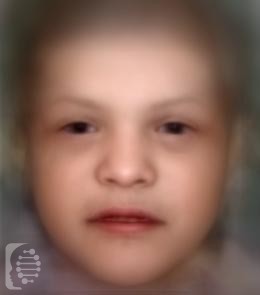What is Focal Facial Dermal Dysplasia?
Focal Facial Dermal Dysplasia, also called Brauer syndrome, is a rare genetic disorder. Since its identification in 1929, only 80 cases have been documented to date.
The disease is characterized by congenital (present at birth) facial lesions around the temples of the face.
There are 4 types of the syndrome,
- Type 1- Brauer
- Type 2- Brauer-Setleis
- Type 3- Setleis
- Type 4
What gene change causes Focal Facial Dermal Dysplasia?
Genes FFDD1, FFDD2, TWIST2 and CYP26C1 have been linked to the phenotype.
Autosomal recessive pattern has been demonstrated for the first two genes, whilst the others have been shown to be inherited in a autosomal dominant way.
Autosomal recessive inheritance means an affected individual receives one copy of a mutated gene from each of their parents, giving them two copies of a mutated gene. Parents, who carry only one copy of the gene mutation will not generally show any symptoms, but have a 25% chance of passing the copies of the gene mutations onto each of their children.
In the case of autosomal dominant inheritance just one parent is the carrier of the gene mutation, and they have a 50% chance of passing it onto each of their children. Syndromes inherited in an autosomal dominant inheritance are caused by just one copy of the gene mutation.
What are the main symptoms of Focal Facial Dermal Dysplasia?
The main symptom of the syndrome is the presence of facial lesions, from birth, on the temples of affected individuals.
They may also experience skin, or parts of skin, missing. Other symptoms relating to the skin, include indented skin and skin pigmentation that may be spotted or patchy.
Other physical features of the syndrome may include eyelashes that fail to grow, a large and wide nose, a pointed chin, and a full, upper lip.
How is it diagnosed?
To find out if someone has a diagnosis of Focal Facial Dermal Dysplasia, it is important to have a consultation and evaluation with a clinical genetic specialist. Specialists may also suggest specific genetic testing or other types of tests to help reach a diagnosis. FDNA’s AI technology can help speed up the diagnostic process by analyzing facial features and other health information.

